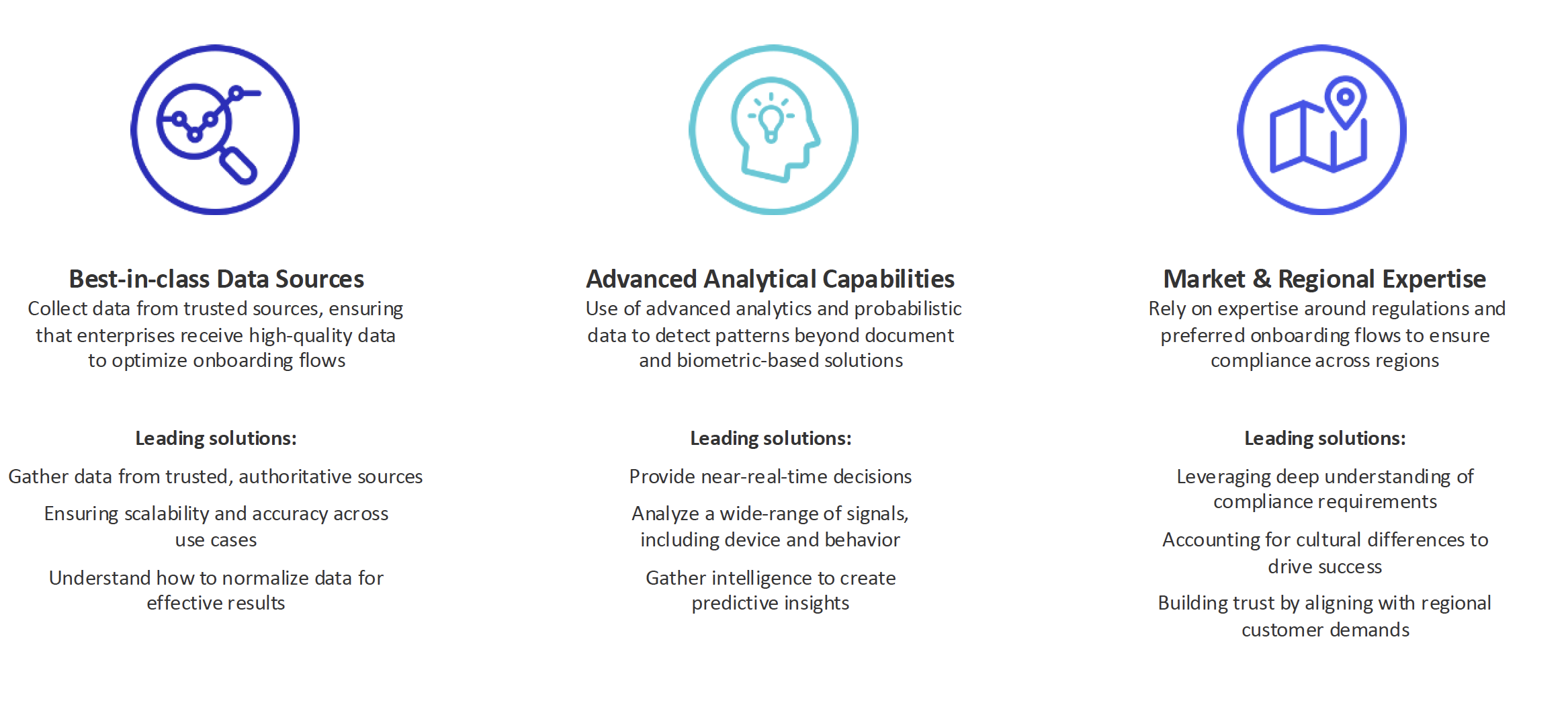Account opening fraud rates have skyrocketed in recent years, increasing from $3.5 billion in 2020 to over $10 billion in 2023 – an average growth rate of 41.9% per year. The primary culprit behind this growth? Inefficient fraud prevention solutions. Traditional document and biometric-based solutions can no longer match the sophisticated technologies fraudsters are employing.
Using outdated and ineffective fraud prevention solutions can lead to significant monetary losses. Research from Liminal’s latest report, Solving Advanced Fraud in Account Opening, commissioned by Data Zoo, shows that enterprises using inefficient solutions can face losses of over $100,000 per fraud incident. Businesses are taking notice: 66% of buyers surveyed in the report indicated that they’re seeking to replace traditional onboarding solutions.
Exploring what tools and technologies make up a modern, comprehensive fraud prevention solution is critical for preventing fraud, avoiding losses, and understanding where the market is headed as enterprises look for new options.
Current Shortcomings
The Liminal report found that buyers pinpointed several key shortcomings with current fraud prevention solutions, including:
Outdated Technology: 68% of buyers surveyed in the report expressed concerns about how solutions stood up against modern threats like social engineering and rapid attack execution.
Lack of High-Quality Data: More than 50% of the enterprises surveyed pointed to a lack of high-quality, real-time data as a key contributor to fraud. Low-quality data means that buyers are choosing between better pass rates and adequate fraud detection, resulting in disastrous consequences.
Missing Regional Expertise: Many enterprises choose solutions with ‘global’ scale that are not well-versed in regional regulatory requirements or protocols, limiting their effectiveness.
Together, these pain points illustrate the broad failures of contemporary fraud prevention solutions. Existing solutions have focused on building a multi-use case platform, seeking to help streamline operations for enterprises. However, a lack of focus on the underlying data and technical capabilities has resulted in escalating fraud losses for businesses and consumers alike.
To be successful, solutions must address specific account opening fraud use cases, combining to create layered approaches that more effectively combat fraud.
What Makes a Leading Solution?
Solutions that combine best-in-class data, advanced analytical capabilities, and regional and market expertise alleviate many of the main concerns buyers shared. Combined, these elements enable enterprises to prevent sophisticated fraud attacks, optimize onboarding flows, and ensure compliance across multiple jurisdictions.

By combining high-quality data, advanced analytics, and market expertise, modern fraud prevention systems create a layered approach capable of addressing specific account opening fraud use cases. For example, when faced with synthetic identity fraud, high-quality data sources will detect subtle behavioral red flags and inaccurate identity data, advanced analytics will detect anomalous behavior to flag a potential risk, and regional expertise will recognize cultural nuances in fraudster tactics. Together, these three elements combine to minimize fraud risks.
Ultimately, fraud prevention solutions are evolving from broad platforms that are stretched too thin to mitigate fraud to layered systems that address specific fraud use cases, minimizing gaps to more effectively stop fraudsters in their tracks.
There are significant bottom-line benefits associated with sophisticated fraud prevention, too: the Liminal report found that choosing the best solution returns an average of $10,337 per fraud incident, factoring in potential direct, indirect, and consumer fraud losses.
The Necessity of High-Quality Data
High-quality data is the foundation of modern, effective fraud prevention. While this may seem simple, practitioners surveyed in the Liminal report found that the most helpful fraud prevention systems focused on enhancing the overall breadth, depth, and quality of the underlying data and technical features.
The challenge of sourcing consistent, reliable, and global data quickly can negatively impact enterprises’ speed of growth and confidence in entering new markets.
Data Zoo is focused on providing data that builds trust between entities and individuals, improving the safety of the global financial system and creating new economic opportunities. By integrating authoritative data into the identity verification journey, Data Zoo ensures security and privacy, and increases enterprises’ ability to address the evolving nature of identity fraud. A layered approach to identity verification that leverages authoritative data from Data Zoo increases certainty that organizations are addressing the evolving nature of identity fraud.
Now that we’ve explored the rise of account opening fraud and the solutions that are best-equipped to combat it, we’ll be diving into the challenges different regions across the world face when it comes to mitigating fraud in the next series leading up to the release of Liminal’s latest report, Solving Advanced Fraud in Account Opening, commissioned by Data Zoo.
Here are some other interesting articles in the series:
